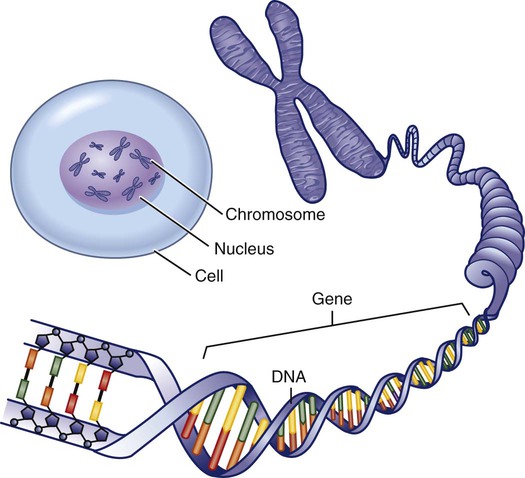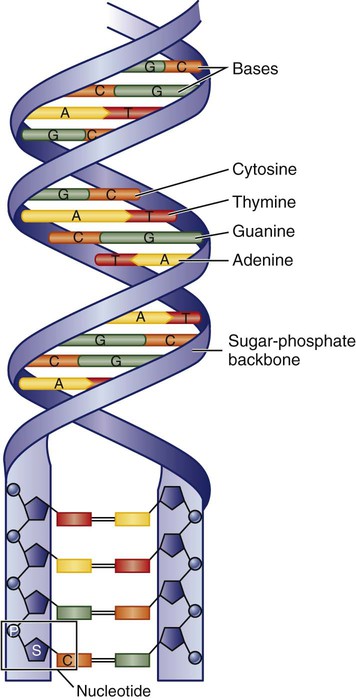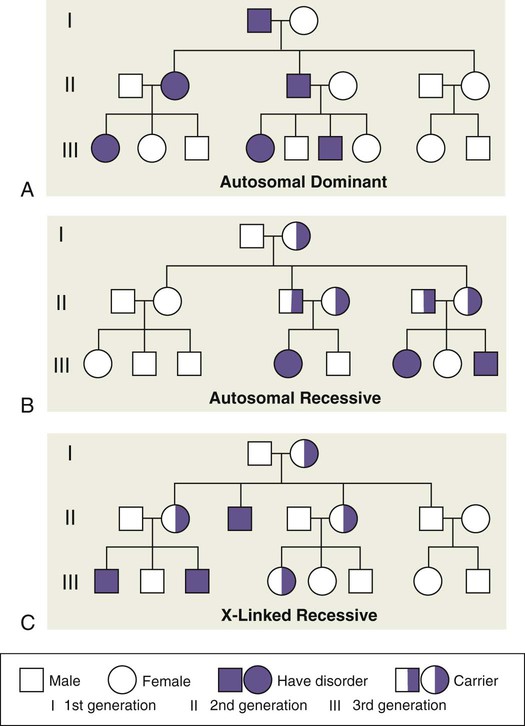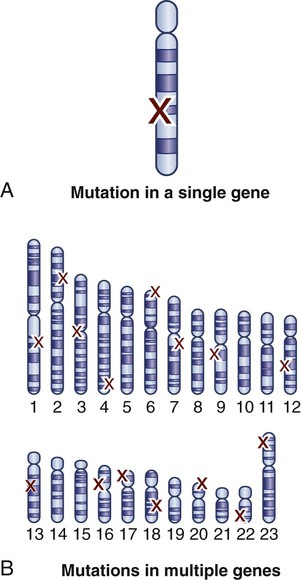1. Differentiate the common terms related to genetics and genetic disorders: autosomal, carrier, heterozygous, homozygous, mutation, recessive, and X-linked gene. 2. Differentiate between the two common causes of genetic mutations. 3. Compare and contrast the three most common inheritance patterns of genetic disorders. 4. Describe the most common classifications of genetic disorders. 5. Explore the complex ethical and social implications of genetic testing. 6. Analyze the role of pharmacogenetics in developing personalized drug therapy. 7. Discuss your role in assisting the patient and family in dealing with genetic issues. In the 1860s an Austrian monk named Gregor Mendel, while experimenting with pea plants, discovered how traits are transmitted from parents to offspring. This discovery laid the foundation for modern genetics, the study of genes and their role in inheritance. Genetics determines the way that certain traits or conditions are passed down from one generation to another. Genomics is the study of all of a person’s genes (the genome), including interactions of these genes with each other and with the person’s environment. (Common terms used in genetics and genomics are defined in Table 13-1.) Genomics includes the study of complex diseases such as heart disease, asthma, diabetes mellitus, and cancer because these diseases are typically caused by a combination of genetic and environmental factors rather than by a single gene. TABLE 13-1 GLOSSARY OF GENETIC AND GENOMIC TERMS A person’s genes can have a profound impact on health and disease. More than 4000 diseases are thought to be related to altered genes. Genomic factors play a role in 9 of the 10 leading causes of death in the United States, including heart disease, cancer, diabetes, stroke, and Alzheimer’s disease.1 Genes are the basic units of heredity. There are approximately 20,000 to 25,000 genes in each person’s genetic makeup, or genome. Genes encode (carry the instructions) for proteins that direct the activities of cells and functions of the body. Genes control how a cell functions, including how quickly it grows, how often it divides, and how long it lives. To control these functions, genes produce proteins that perform specific tasks and act as messengers for the cell. Therefore it is essential that each gene have the correct instructions or “code” for making its protein so that the protein can perform the proper function for the cell.2 Genes are arranged in a specific linear formation along a chromosome (Fig. 13-1). Each gene has a specific location on a chromosome, termed a locus. An allele is one of two or more alternative forms of a gene that occupy corresponding loci on homologous chromosomes (a pair of chromosomes having corresponding deoxyribonucleic acid [DNA] sequences, with one coming from the mother and the other from the father). Each allele codes for a specific inherited characteristic. DNA bases pair up with each other, A with T and C with G, to form units called base pairs. Each base is also attached to a sugar molecule and a phosphate molecule (Fig. 13-2). Together, a base, sugar, and phosphate are called a nucleotide. Nucleotides are arranged in two long strands that form a spiral called a double helix. The structure of the double helix is somewhat like a ladder, with the base pairs forming the ladder’s rungs and the sugar and phosphate molecules forming the ladder’s vertical sidepieces. If the chromosomes in one of your cells were uncoiled and placed end-to-end, the DNA would be about 6 feet long. If all of the DNA in your body were connected, it would stretch about 67 billion miles.3 A genetic mutation is like a spelling error in a gene’s sequence. For example, in people with sickle cell disease, a substitution of a single base (adenine is replaced by thymine) in a single gene (β-globin gene) causes the disease (Fig. 13-3). Mutations range in size from a single DNA base (building block) to a large segment of a chromosome. Mutations can occur when a cell is dividing. Considering that 3 billion base pairs are replicated in each cell division, DNA replication is very accurate. However, during replication occasionally mistakes such as deletions, insertions, or duplication of DNA material can occur. Although DNA repair enzymes can correct replication errors, mistakes can go uncorrected.4 In addition to cell division, DNA damage can also occur from environmental factors. For example, ultraviolet (UV) radiation can cause DNA damage, leading to skin cancer. Toxins in cigarettes can lead to lung cancer. Many chemotherapy drugs used to treat cancer target the DNA of both cancer cells and healthy cells. In the process these drugs increase a person’s risk of developing secondary cancers (see Chapter 16). Genetic disorders can be categorized into autosomal dominant, autosomal recessive, or X-linked (sex-linked) recessive disorders (Table 13-2). If the mutant gene is located on an autosome, the genetic disorder is called autosomal. If the mutant gene is on the X chromosome, the genetic disorder is called X-linked. TABLE 13-2 COMPARISON OF GENETIC DISORDERS Family pedigrees for autosomal recessive and dominant disorders and X-linked recessive disorders are shown in Figs. 13-4 and 13-5. The Human Genome Project (HGP), which was completed in 2003, mapped the entire human genome.5 Analysis of the data will continue for many years. The knowledge gained through the HGP will (1) help improve the diagnosis of diseases, (2) allow for earlier detection of genetic predisposition to diseases, and (3) play a critical role in determining risk assessment for genetic-related diseases. In addition, the results of the HGP assist in matching organ donors with transplant recipients. A genetic disorder is caused in whole or in part by an alteration in the DNA sequence. As discussed in the section on genetic mutations (pp. 192-193), genetic disorders can be inherited (person born with altered genetic code) or they can be acquired (e.g., replication errors, damage to DNA from toxins). Genetic disorders can be caused by (1) a mutation in one gene (single gene disorder); (2) mutations in multiple genes (multifactorial inheritance disorder), which are often related to environmental factors; or (3) damage to chromosomes (changes in the number or structure of entire chromosomes). Some genetic disorders result from a single gene mutation (Fig. 13-6, A). Examples of these diseases include cystic fibrosis, sickle cell disease, and polycystic kidney disease. The pattern of inheritance for single gene disorders can be autosomal dominant, autosomal recessive, or X-linked. Single gene disorders are relatively rare compared with more commonly occurring multifactorial genetic disorders such as diabetes mellitus and heart disease. Multifactorial genetic disorders are complex diseases that result from small inherited variations in genes, often acting together with environmental factors (Fig. 13-6, B). Heart disease, diabetes, and most cancers are examples of such disorders. Environmental factors can alter the way our genes are expressed (i.e., which genes are “switched” on or off). Identical twins, who have the same genetic makeup, do not always develop the same diseases or at the same rate.6
Genetics and Genomics
Genetics and Genomics
Term
Definition
Allele
An alternative form of a gene. Each person receives two alleles of a gene, one from each biologic parent. Different alleles produce variations in inherited traits such as eye color and blood type.
Autosome
Any chromosome that is not a sex chromosome. Humans have 22 pairs of autosomes.
Carrier
Individual who carries a copy of a mutated gene for a recessive disorder.
Chromosome
A compact structure containing DNA and proteins present in nearly all cells of the body. Normally each cell has 46 chromosomes in 23 pairs. Each biologic parent contributes one of each pair of chromosomes.
Codominance
Two dominant versions of a trait that are both expressed in the same individual.
Congenital disorder
Condition present at birth.
Dominant allele
Gene that is expressed in the phenotype of a heterozygous individual.
Familial disorder
Condition that affects more than one person in a family.
Gene
The basic unit of heredity information located on a specific part of a chromosome. Genes direct cells to make proteins and guide almost every aspect of operation and repair of cells.
Genetic risk factor
A change in a gene that increases a person’s risk of developing a disease.
Genetics
Study of genes and their role in inheritance.
Genome
All the DNA contained in an individual.
Genome-wide association study (GWAS)
A study approach that involves scanning complete sets of DNA (genomes) of many individuals to find genetic variations associated with a particular disease.
Genomics
Study of how genes interact and influence people’s biologic and physical characteristics.
Genotype
Genetic identity of an individual. This identity does not show as outward characteristics.
Hereditary
Transmission of a disease, condition, or trait from parent to children.
Heterozygous
Having two different alleles for one given gene, one inherited from each parent.
Homozygous
Having two identical alleles for one given gene, one inherited from each parent.
Locus
Position of a gene on a chromosome.
Mutation
A change in DNA or a gene. Sometimes these changes are passed from parent to children.
Oncogene
Gene that is able to initiate and contribute to the conversion of normal cells to cancer cells.
Pedigree
Family tree that contains the genetic characteristics and disorders of that particular family.
Pharmacogenetics
Study of variability of responses to drugs related to variations in single genes.
Pharmacogenomics
Study of variability of responses to drugs related to variations in and interactions of multiple genes.
Phenotype
Observable traits or characteristics of an individual (e.g., hair color).
Protooncogene
Normal cellular genes that are important regulators of normal cellular processes. Mutations can activate them to become oncogenes.
Recessive allele
Allele that has no noticeable effect on the phenotype in a heterozygous individual.
Trait
Physical characteristic that one inherits, such as hair or eye color.
X-linked gene
Gene located on the X chromosome. In general, sex-linked disorders are only seen in males.
Basic Principles of Genetics
Genes.
DNA.
Genetic Mutations
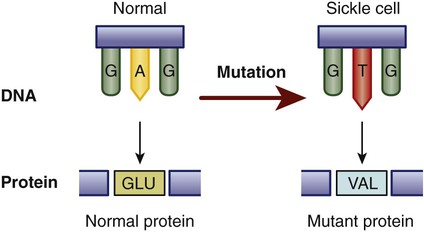
Types of Mutations.
Inheritance Patterns
Characteristics
Examples
Autosomal Dominant
Autosomal Recessive
X-Linked Recessive
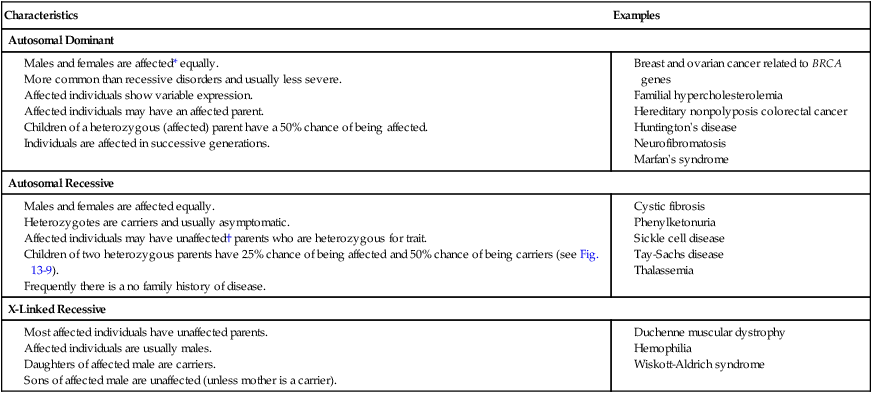
Human Genome Project
Genetic Disorders
Classification of Genetic Disorders
Single Gene Disorders.
Multifactorial Genetic Disorders.
Epigenetics.
![]()
Stay updated, free articles. Join our Telegram channel

Full access? Get Clinical Tree


Genetics and Genomics

